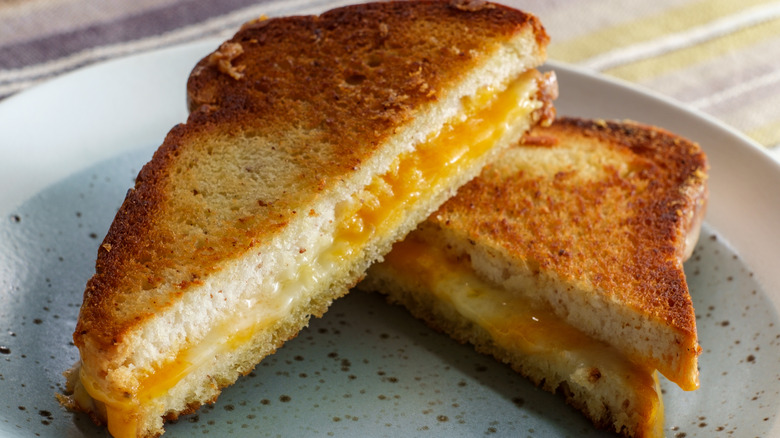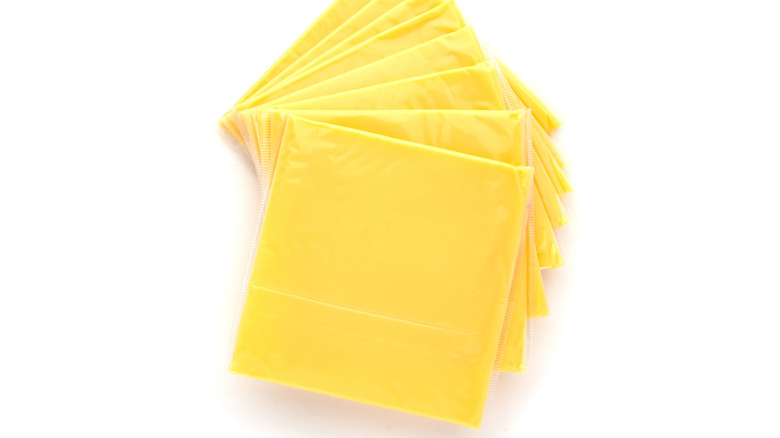The Truth About What's In American Cheese
Blame it on nostalgia, but it's hard to find a better grilled cheese than the one that is made from American cheese. There is something about that easy-to-melt, vibrant orange hue, and ultra creamy texture that makes it the perfect glue to hold together two slices of crispy warm bread.
Lately, American cheese has been called under question over if it is, in fact, cheese. For all you die-hard Kraft singles lovers, this news may come as a bit of a shock, but it's time you found out the truth. Here's what we know about American cheese.
According to Spoon University, American cheese started out as good old fashioned cheddar cheese. Throughout the years, it adopted new names such as "Yankee cheese" and "Yellow cheese." Along with picking up new nicknames, it also picked up a sizable list of extra ingredients. And we do mean sizeable! All of these extra additions is why we cannot legitimately claim that the modern-day American cheese is "real" cheese. For cheese to be correctly labeled as cheese, it must be made with at least 51% real cheese. Surprisingly, Kraft American singles, for example, is not. It is now labeled by the FDA as a noticeably less natural, "pasteurized cheese product" (via Serious Eats).
Who gave American cheese it's makeover?
So how did the original American cheddar cheese receive such an unrecognizable makeover? We can hand over most of the blame (or thanks!) to Canadian-born Robert L. Kraft. Spoon University claims that Kraft became the patent owner of processed cheese when he started sterilizing cheese by heating American cheddar at 175 degrees for 15 minutes all the while constantly whisking it. We can also blame and thank Kraft for being the first one to start individually wrapping cheese slices.
In addition to changing the way original American cheese was manufactured and packaged, the cheese giant Kraft, is also responsible for all of the additions. Today, a slice of Kraft American Cheese contains milk, whey, milk fat, calcium phosphate, salt, sodium citrate, sodium phosphate, sorbic acid, cheese culture, enzymes, annatto extract, and vitamin D3 (via Serious Eats). That's quite the unnerving large amount of ingredients situated between those two slices of crispy warm bread.
This individually wrapped cheese imposter has likely fooled many for years. And now that you know the truth, it's up to you to decide if you want to make the switch to a new grilled cheese recipe. Or, you can always stick with the nostalgic recipe that contains a surprisingly little amount of real cheese.


